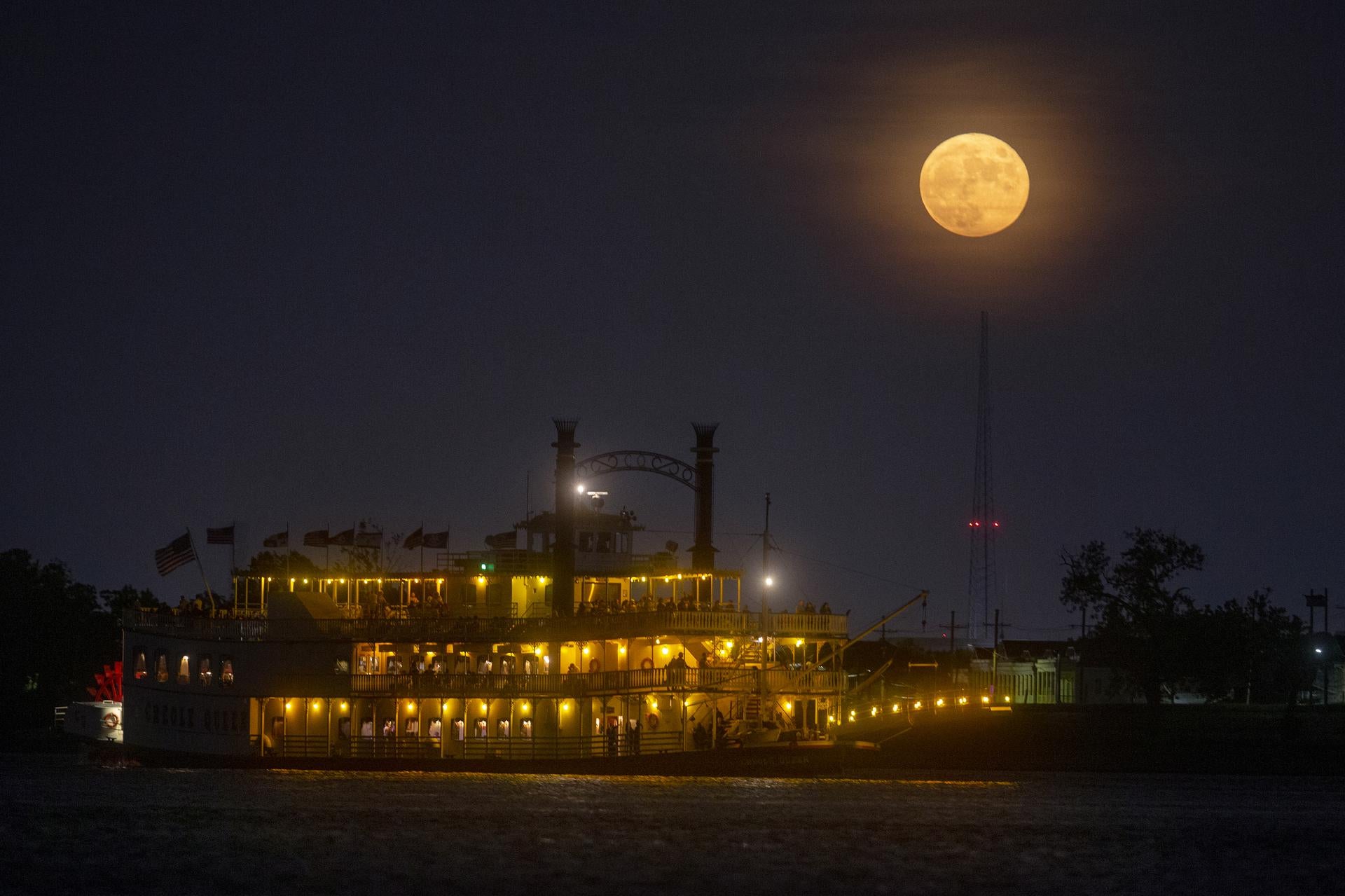The last “Super Moon” of 2022 rises Thursday night
The August Sturgeon Moon and the Perseid meteor shower will mark the skies the second week of August

The next full Moon, and the last “Super Moon” of the year, depending on how you define it, will appear on the evening of Thursday, 11 August.
Sometimes known as the Sturgeon Moon, the full Moon will peak at 9.36pm EDT, when its high in the sky, but will look its largest as it rises in the east around sunset. The term Sturgeon Moon comes from the native American Algonquin tribes, who noticed sturgeon fish were more easily caught this time of year, according to Nasa.
If you count the full Moon as a Super Moon, it will be the last of 2022.
A Super Moon occurs when a full Moon coincides with the Moon’s perigee, or closest approach to Earth in its elliptical orbit around our planet. A Super Moon can appear 14 to 30 percent bright than a full Moon at apogee, or the point where the Moon is the furthest distance from Earth along its orbit.
The peak of the coming full Moon will lag the Moon’s perigee by a day, with the Moon’s closest approach taking place the afternoon of Wednesday 10 August.
How much of a different will be noticeable by the casual observer is debatable; the Moon will look full from Wednesday through Friday.
The Sturgeon Moon could put a damper on other sky watching activities however.
The 11 August peak of the full Moon also coincides with the Perseids meteor shower, generally considered one of the best meteor showers of the year. Resulting from Earth passing through the tail of the comet 109P/Swift-Tuttle, which takes 133 years to orbit the Sun, the Perseids will peak on 13 August, but will be remain active through 1 September.
Join our commenting forum
Join thought-provoking conversations, follow other Independent readers and see their replies
Comments